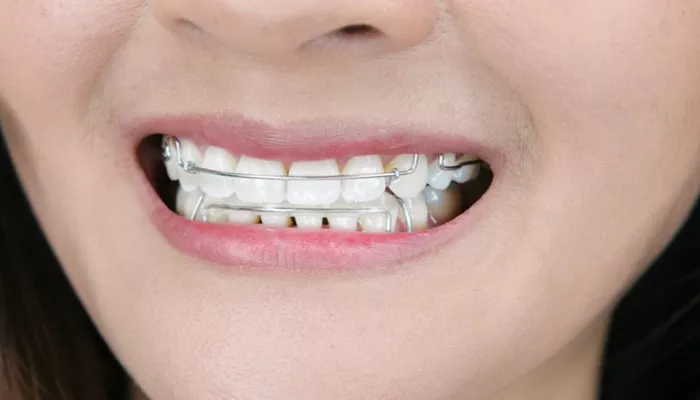Orthodontic treatment often brings to mind the image of braces—metal brackets and wires that gradually straighten teeth. However, another important device in orthodontics is the retainer. Most people associate retainers with the period after braces, but sometimes retainers are used before braces. This article explores whether you get a retainer before braces, why it might be recommended, and how it fits into the overall orthodontic journey.
What Is A Retainer?
A retainer is a custom-made dental appliance designed primarily to maintain the position of teeth after orthodontic treatment. It prevents teeth from shifting back to their original positions, a process called orthodontic relapse. Retainers come in different types, including fixed retainers bonded to the back of teeth and removable retainers made from plastic or wire.
While retainers are most commonly used after braces, they can also serve therapeutic roles before braces are applied.
Do You Get a Retainer Before Braces?
Yes, in some cases, you may get a retainer before braces. This is not the standard approach for everyone but is recommended by orthodontists under specific circumstances.
Why Would You Wear a Retainer Before Braces?
Orthodontists may prescribe a retainer before braces for several reasons:
Correct Minor Spacing Issues: If you have small gaps between your teeth, a retainer might be able to close or reduce these gaps without the need for full braces. This can make subsequent braces treatment simpler and sometimes shorter.
Habit Correction: Some patients develop habits like tongue thrusting or teeth grinding that can affect tooth alignment. A retainer can help correct these habits by guiding tongue position or keeping the jaw in a position that discourages grinding.
Guide Jaw Growth: For younger patients, retainers can help steer jaw growth in a favorable direction before braces are applied, potentially reducing the severity of orthodontic issues later.
Prepare Teeth for Braces: By addressing minor alignment or spacing problems early, retainers can create a better starting point for braces, potentially reducing overall treatment time and cost.
What Issues Can a Pre-Braces Retainer Treat?
| Issue | How Retainers Help Before Braces |
| Minor gaps between teeth | Close or reduce small spaces, possibly avoiding braces |
| Mild crowding | Align a single misaligned tooth or mild crowding |
| Tongue thrusting | Train tongue to rest properly, preventing pressure on teeth |
| Teeth grinding | Maintain jaw position to reduce grinding damage |
How Does Wearing a Retainer Before Braces Work?
If your orthodontist recommends a retainer before braces, you will wear it for a period to correct minor issues. This phase may last from a few months to longer, depending on your specific needs. During this time, the retainer applies gentle pressure to move teeth or maintain positions.
After this preparatory phase, braces may be applied to address more complex alignment or bite problems that retainers alone cannot fix.
Is Wearing a Retainer Before Braces Common?
Wearing a retainer before braces is not necessary for everyone. It depends on:
- The severity of your orthodontic issues
- Your age and jaw development
- The presence of habits affecting teeth position
- The orthodontist’s treatment plan and goals
For many patients, braces are applied first, followed by retainers to maintain results. But for some, retainers serve as a useful first step.
Benefits of Wearing a Retainer Before Braces
Early Intervention: Addressing minor problems early can prevent them from worsening.
Cost-Effective: Minor spacing issues corrected with a retainer may reduce the extent or duration of braces treatment.
Habit Management: Correcting tongue thrust or grinding habits early can improve long-term outcomes.
Better Treatment Planning: Preparing teeth and jaw can make braces treatment more efficient and comfortable.
Retainers After Braces: The Standard Practice
While retainers before braces are sometimes used, the most common use of retainers is after braces. After braces are removed, teeth need support to stabilize in their new positions. The bone and gum tissue around teeth require time to strengthen and adapt, and retainers provide this support.
Failure to wear retainers after braces can result in teeth shifting back, undoing the progress made.
Summary Table: Retainers Before vs. After Braces
| Aspect | Retainers Before Braces | Retainers After Braces |
| Purpose | Correct minor spacing, habits, guide growth | Maintain teeth alignment post-braces |
| Treatment Phase | Preparation phase before braces | Retention phase after braces |
| Duration | Variable; until minor issues improve | Often long-term, sometimes lifelong at night |
| Benefits | Reduce complexity/cost of braces, habit control | Prevent relapse, maintain orthodontic results |
| Commonality | Less common, case-specific | Standard for almost all orthodontic patients |
Professional Recommendations
Consult your orthodontist for a personalized evaluation.
Follow their advice on whether a retainer before braces is suitable for your case.
If prescribed a pre-braces retainer, wear it as directed to maximize benefits.
After braces, commit to wearing your retainer as recommended to preserve your smile.
Conclusion
You may get a retainer before braces, but it depends on your individual orthodontic needs. Retainers can be a valuable tool for correcting minor spacing, managing habits, and guiding jaw growth before braces begin. This preparatory step can make braces treatment easier, shorter, and more effective.
However, retainers are most commonly used after braces to maintain your new smile. Both phases—before and after braces—highlight the retainer’s essential role in orthodontic care.

